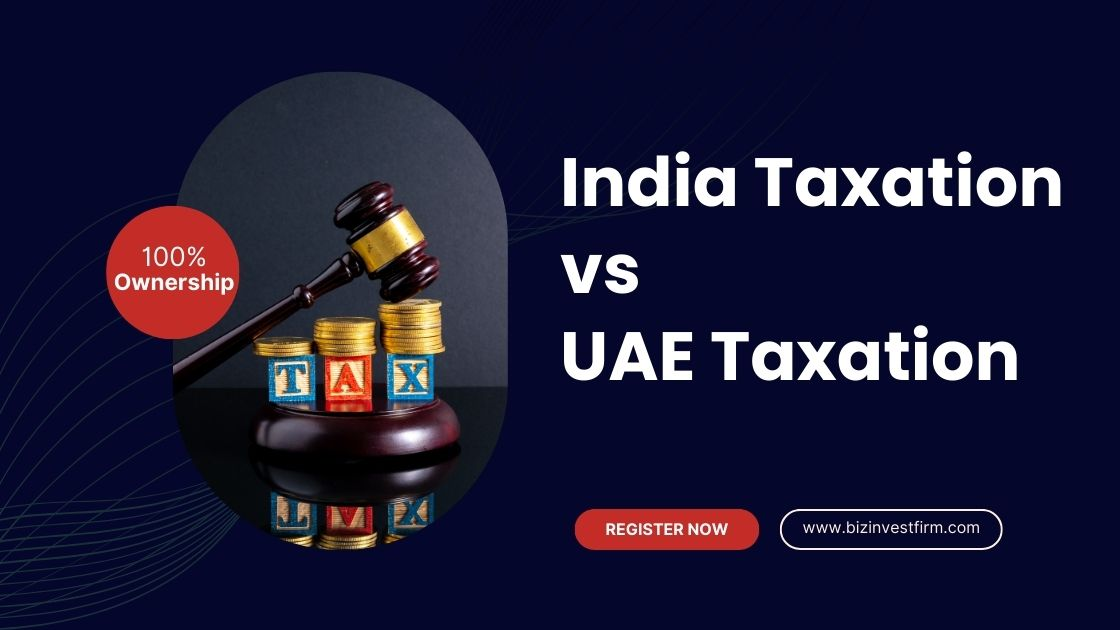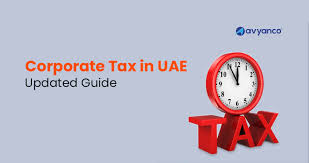Now Reading: Taxation Differences Across UAE Emirates: What Investors Should Know in 2025
-
01
Taxation Differences Across UAE Emirates: What Investors Should Know in 2025
Taxation Differences Across UAE Emirates: What Investors Should Know in 2025

Table of Contents
Taxation Differences Across UAE Emirates: What Investors Should Know in 2025

Taxation Differences Across UAE Emirates: The United Arab Emirates (UAE) remains a global hub for real estate investment in 2025, with its tax-friendly environment attracting investors to emirates like Abu Dhabi, Dubai, Ras Al Khaimah (RAK), Sharjah, Ajman, Umm Al Quwain, and Fujairah. While the UAE’s federal tax framework ensures consistency in major taxes like corporate tax and VAT, emirate-specific regulations and fees create nuanced differences that impact real estate investors, particularly in high-profile developments like Abu Dhabi’s Al Fahid Island or RAK’s Al Marjan Island. This guide details the taxation landscape across the UAE emirates, focusing on real estate-related taxes and fees, and provides actionable insights for investors in 2025.
Federal Taxation Framework (Applicable Across All Emirates)
The UAE’s federal tax system, overseen by the Federal Tax Authority (FTA), applies uniformly across all emirates, ensuring a consistent baseline for real estate investors. Key federal taxes relevant to property investment include:
- No Property Tax:
- Details: The UAE imposes no annual property tax on residential or commercial real estate, unlike many global markets where property taxes range from 1-3% of assessed value.
- Implications: Investors across all emirates retain full rental income and capital gains, enhancing ROI (e.g., 5-10% in Abu Dhabi, 7-12% in RAK, 6-9% in Dubai).
- Investor Tip: Factor in service or maintenance fees, which vary by development and can offset the absence of property tax (e.g., higher fees in luxury projects like Al Fahid Island).
- No Capital Gains Tax:
- Details: Profits from selling real estate are not subject to capital gains tax, whether held personally or through a business entity.
- Implications: This maximizes returns on property sales, particularly in high-appreciation areas like Al Fahid Island (8-10% ROI) or Dubai’s Downtown (6-8% ROI).
- Investor Tip: Long-term holding strategies benefit most, as frequent flipping incurs transfer fees (see emirate-specific details below).
- Corporate Tax (9%, Introduced June 2023):
- Details: A 9% federal corporate tax applies to net profits exceeding AED 375,000 ($102,000) for businesses, including those managing real estate as a commercial activity. Personal ownership of properties (e.g., leasing without a business license) is generally exempt.
- Implications: Commercial properties, like retail spaces in Al Fahid Island or Dubai’s Business Bay, are subject to corporate tax if leased through a licensed entity. For example, AED 500,000 in annual profit incurs AED 11,250 tax (9% of AED 125,000 above the threshold). Residential rental income is typically exempt if held personally.
- Investor Tip: Hold residential properties personally to avoid corporate tax, and consult tax advisors to optimize business structures for commercial investments.
- Value-Added Tax (VAT, 5%):
- Details: A 5% VAT applies to commercial property sales and leases across all emirates, as these are taxable supplies. Residential leases are exempt, except for serviced apartments or short-term rentals (e.g., holiday homes).
- Implications: Tenants typically cover VAT on commercial leases (e.g., AED 10,000 on a AED 200,000 lease), but landlords must collect and remit it to the FTA. Residential properties, like Al Fahid Island’s villas, are VAT-exempt for long-term leases.
- Investor Tip: Register for VAT if taxable supplies exceed AED 375,000 annually, and ensure compliance to avoid penalties.
Emirate-Specific Taxation and Fee Differences

While federal taxes are uniform, each emirate imposes its own fees and regulations for real estate transactions, impacting buyers and investors differently. Below is a breakdown of key differences, with a focus on Abu Dhabi, Dubai, and RAK, and brief notes on Sharjah, Ajman, Umm Al Quwain, and Fujairah.
1. Abu Dhabi
- Transfer Fees:
- Rate: 1-2% of the property’s sale value, determined by the Abu Dhabi Municipality’s Executive Committee. For example, a AED 5 million property incurs AED 50,000-100,000.
- Exemptions: Transfers between immediate family members or within the same legal entity.
- Implications: Modest compared to global standards but significant for high-value properties like Al Fahid Island’s villas (AED 2.5 million+).
- Registration Fees:
- Rate: Nominal fee, typically AED 250 for title deeds.
- Implications: Minimal cost, ensuring affordability for most buyers.
- White Land Tax:
- Rate: 1-4% annually on vacant commercial/investment land with infrastructure, per Resolution No. 49 of 2018. Implementation details are pending in 2025.
- Implications: Potential cost for investors holding undeveloped plots near Al Fahid Island (e.g., AED 10,000-40,000 per AED 1 million of land value). Not applicable to developed properties.
- Investor Tip: Develop or lease vacant land to avoid potential tax liability.
- Municipal Service Fees:
- Rate: One-off infrastructure fee on development/transfer, based on location and value. Annual fees (e.g., 5% of rental value, AED 10,000 on AED 200,000 rent).
- Implications: Ongoing costs for properties like Al Fahid Island’s retail spaces, though sustainable features (e.g., LEED Platinum certification) may reduce expenses.
- Unique Features:
- ADGM Framework: Al Maryah and Al Reem Islands operate under Abu Dhabi Global Market (ADGM) regulations, offering transparent ownership records and UK-modeled insolvency protections, unlike Al Fahid Island, which falls under Abu Dhabi Municipality rules.
- Golden Visa: AED 2 million+ investments qualify for a 10-year residency visa, ideal for Al Fahid Island’s high-end properties.
- Comparison to Federal Taxes: Abu Dhabi’s white land tax is a unique risk, absent in most other emirates, but its absence of property tax aligns with the federal framework.
2. Dubai
- Transfer Fees:
- Rate: 4% of the property’s sale value, payable to the Dubai Land Department (DLD). For a AED 5 million property, this equals AED 200,000.
- Additional Fees: AED 5,000 registration fee for properties above AED 500,000, plus a 2% agent commission (optional).
- Implications: Significantly higher than Abu Dhabi’s 1-2%, increasing upfront costs for buyers in areas like Downtown Dubai or Dubai Marina.
- Registration Fees:
- Rate: AED 2,000-5,000, depending on property value, plus administrative fees (e.g., AED 420 for title deeds).
- Implications: Slightly higher than Abu Dhabi’s AED 250, but still minor.
- Service Fees:
- Rate: Annual fees for community maintenance (e.g., AED 10-20 per square foot in premium areas like Emaar’s Burj Al Arab communities). No equivalent to Abu Dhabi’s municipal infrastructure fee.
- Implications: Higher ongoing costs for luxury developments compared to Abu Dhabi’s municipal fees, though Dubai’s infrastructure is more mature.
- Unique Features:
- DLD Regulations: Dubai’s Real Estate Regulatory Agency (RERA) enforces strict escrow accounts for off-plan projects, protecting buyers from developer defaults, unlike Abu Dhabi’s less formalized escrow system for projects like Al Fahid Island.
- Golden Visa: Identical to Abu Dhabi (AED 2 million+ for 10-year residency), but Dubai’s higher property prices (e.g., AED 3 million+ for Downtown apartments) make it less accessible than RAK.
- Comparison to Federal Taxes: Dubai aligns with federal tax rules (no property/capital gains tax, 5% VAT, 9% corporate tax) but has higher transfer fees, making it costlier for buyers upfront.
3. Ras Al Khaimah (RAK)
- Transfer Fees:
- Rate: 1-2% of the property’s sale value, similar to Abu Dhabi, payable to the RAK Land Department. For a AED 1.2 million Al Marjan Island studio, this equals AED 12,000-24,000.
- Exemptions: Similar to Abu Dhabi, family or same-entity transfers may be exempt.
- Implications: Low transfer fees make RAK attractive for budget-conscious investors compared to Dubai’s 4%.
- Registration Fees:
- Rate: Nominal, typically AED 200-500, comparable to Abu Dhabi.
- Implications: Minimal impact on overall costs.
- Service Fees:
- Rate: Annual community fees, typically lower than Dubai (e.g., AED 5-10 per square foot in Al Marjan Island). No equivalent to Abu Dhabi’s white land tax or infrastructure fee.
- Implications: Lower ongoing costs than Dubai or Abu Dhabi, reflecting RAK’s developing infrastructure.
- Unique Features:
- Affordability: RAK’s lower property prices (e.g., AED 1.2 million studios vs. AED 2 million+ in Abu Dhabi) make it accessible, with higher rental yields (7-12% vs. 5-8% in Abu Dhabi).
- Tourism-Driven: The Wynn Al Marjan Island resort (opening 2027) boosts demand, unlike Abu Dhabi’s cultural focus (e.g., Al Fahid Island’s proximity to Louvre Abu Dhabi).
- Golden Visa: AED 2 million+ investments qualify, achievable with lower-cost properties than in Abu Dhabi or Dubai.
- Comparison to Federal Taxes: RAK mirrors federal tax policies, with no property or capital gains tax, and no unique taxes like Abu Dhabi’s white land tax, giving it a slight edge for land investors.
4. Sharjah
- Transfer Fees:
- Rate: 2% of the property’s sale value, split between buyer and seller (1% each), payable to the Sharjah Real Estate Registration Department.
- Implications: Lower than Dubai’s 4% but higher than Abu Dhabi/RAK’s 1-2%, balancing affordability and cost.
- Registration Fees:
- Rate: AED 500-1,000, slightly higher than Abu Dhabi/RAK but lower than Dubai.
- Service Fees:
- Rate: Annual fees for community maintenance, typically AED 5-8 per square foot, lower than Dubai but similar to RAK.
- Unique Features:
- Limited Freehold: Freehold ownership is restricted to specific areas (e.g., Aljada, Tilal City), unlike Abu Dhabi/RAK’s broader freehold zones.
- Affordable Market: Prices are 20-30% lower than Dubai (e.g., AED 800,000 for apartments), with 6-8% rental yields.
- Golden Visa: Available for AED 2 million+ investments, but fewer high-value properties compared to Abu Dhabi.
- Comparison to Federal Taxes: Aligns with federal taxes, with no unique emirate-specific taxes, making it cost-competitive with RAK.
5. Ajman, Umm Al Quwain, and Fujairah
- Transfer Fees:
- Ajman: 1-2% of sale value, similar to Abu Dhabi/RAK.
- Umm Al Quwain: 1-2%, with simpler processes due to smaller market size.
- Fujairah: 1-2%, with limited real estate activity.
- Implications: Low transfer fees make these emirates attractive for budget investors, though market liquidity is lower than Abu Dhabi/Dubai.
- Registration Fees:
- Rate: AED 200-500 across all three, comparable to Abu Dhabi/RAK.
- Service Fees:
- Rate: Minimal, often AED 3-5 per square foot, reflecting less developed infrastructure.
- Unique Features:
- Affordability: Ajman offers apartments from AED 500,000 with 7-9% yields; Umm Al Quwain and Fujairah are even cheaper but less developed.
- Limited Freehold: Freehold ownership is available in select areas (e.g., Ajman’s Al Zorah), but markets are smaller than Abu Dhabi/RAK.
- Golden Visa: Accessible in Ajman for AED 2 million+ investments, less common in Umm Al Quwain/Fujairah due to lower property values.
- Comparison to Federal Taxes: Fully aligned, with no unique taxes, making these emirates low-cost but less liquid options.
Implications for Investors

- Abu Dhabi (e.g., Al Fahid Island):
- Pros: No property/capital gains tax, Golden Visa eligibility, and ADGM’s legal protections enhance investor confidence. Al Fahid Island’s 8-10% ROI is competitive.
- Cons: White land tax risk (pending implementation) and higher property prices (AED 2 million+ vs. AED 1.2 million in RAK) increase costs.
- Best For: HNWIs seeking luxury, sustainable developments with long-term appreciation.
- Dubai:
- Pros: Mature market with high liquidity and RERA’s escrow protections. Yields of 6-9% in areas like Business Bay.
- Cons: Higher transfer fees (4%) and service fees increase upfront and ongoing costs.
- Best For: Investors prioritizing established infrastructure and global brand appeal.
- RAK (e.g., Al Marjan Island):
- Pros: Lower prices (AED 1.2 million studios), higher yields (7-12%), and no white land tax make it cost-effective.
- Cons: Less mature infrastructure and potential supply shortages by late 2025.
- Best For: Budget-conscious investors seeking high yields and tourism-driven growth.
- Sharjah, Ajman, Umm Al Quwain, Fujairah:
- Pros: Low transfer fees (1-2%) and affordable properties (AED 500,000-800,000) with 6-9% yields.
- Cons: Limited freehold zones and lower liquidity reduce scalability.
- Best For: Small-scale investors seeking affordability over premium appeal.
Practical Advice for Investors
- Choose the Right Emirate:
- Select Abu Dhabi for luxury and stability (e.g., Al Fahid Island’s villas), Dubai for liquidity, RAK for affordability and high yields, or Sharjah/Ajman for budget investments.
- Compare ROI: Al Fahid Island (8-10%) vs. Al Marjan Island (9-12%) vs. Sharjah’s Aljada (6-8%).
- Optimize Tax Strategy:
- Hold residential properties personally to avoid corporate tax across all emirates.
- Register for VAT if commercial lease/sale income exceeds AED 375,000, and use accounting software for compliance.
- In Abu Dhabi, develop vacant land to avoid white land tax risk.
- Budget for Fees:
- Account for Dubai’s 4% transfer fees vs. 1-2% in other emirates when calculating upfront costs.
- Include service fees in ROI projections, especially in premium developments (e.g., Al Fahid Island’s eco-friendly infrastructure).
- Leverage Golden Visa:
- Invest AED 2 million+ in Abu Dhabi or Dubai for premium properties, or RAK/Ajman for more affordable options to secure 10-year residency.
- Engage Professionals:
- Consult firms like Metropolitan Capital Real Estate (Abu Dhabi), Emaar Properties (Dubai), or Imobiliare Dubai (RAK) for market insights and regulatory guidance.
- Use legal advisors to navigate ADGM rules in Abu Dhabi or RERA’s escrow requirements in Dubai.
Conclusion
In 2025, the UAE’s federal tax framework ensures a low-tax environment with no property or capital gains taxes, making it highly attractive for real estate investors. However, emirate-specific fees create differences: Dubai’s high transfer fees (4%) contrast with Abu Dhabi and RAK’s 1-2%, while Abu Dhabi’s potential white land tax adds a unique risk. Abu Dhabi’s Al Fahid Island offers luxury and stability, RAK’s Al Marjan Island provides affordability and high yields, and Sharjah/Ajman cater to budget investors. By understanding these nuances and aligning with professional guidance, investors can maximize returns across the UAE’s diverse real estate markets.
UAE Property Taxation Comparison 2025
Federal Taxes (All Emirates)
- No Property Tax: No annual tax on residential/commercial properties, maximizing ROI (5-12% across emirates).
- No Capital Gains Tax: Full retention of sale profits, encouraging long-term investments.
- Corporate Tax (9%): On profits above AED 375,000 for business-managed properties; personal ownership exempt.
- VAT (5%): On commercial leases/sales; residential leases exempt (except serviced apartments).
Emirate-Specific Taxes and Fees
Abu Dhabi
- Transfer Fees: 1-2% of sale value (e.g., AED 50,000-100,000 on AED 5M).
- Registration Fees: AED 250 (title deeds).
- White Land Tax: 1-4% on vacant land, pending implementation (e.g., AED 10,000-40,000 per AED 1M).
- Service Fees: 5% of rental value (e.g., AED 10,000 on AED 200,000 rent).
- Unique: ADGM legal protections, Golden Visa (AED 2M+), Al Fahid Island’s 8-10% ROI.
Dubai
- Transfer Fees: 4% of sale value (e.g., AED 200,000 on AED 5M).
- Registration Fees: AED 2,000-5,000 + AED 420 (title deeds).
- Service Fees: AED 10-20/sq.ft. in premium areas.
- Unique: RERA escrow protections, high liquidity, 6-9% yields.
Ras Al Khaimah (RAK)
- Transfer Fees: 1-2% of sale value (e.g., AED 12,000-24,000 on AED 1.2M).
- Registration Fees: AED 200-500.
- Service Fees: AED 5-10/sq.ft., lower than Dubai.
- Unique: Affordable properties (AED 1.2M studios), 7-12% yields, Wynn Resort boost.
Sharjah
- Transfer Fees: 2% (1% buyer, 1% seller).
- Registration Fees: AED 500-1,000.
- Service Fees: AED 5-8/sq.ft.
- Unique: Limited freehold, 6-8% yields, affordable market.
Ajman, Umm Al Quwain, Fujairah
- Transfer Fees: 1-2% of sale value.
- Registration Fees: AED 200-500.
- Service Fees: AED 3-5/sq.ft.
- Unique: Low-cost properties (AED 500,000+), 7-9% yields, limited liquidity.
Investor Recommendations
- Choose Emirate: Abu Dhabi for luxury/stability, Dubai for liquidity, RAK for affordability, Sharjah/Ajman for budget investments.
- Tax Strategy: Hold residential properties personally, register for VAT if commercial income > AED 375,000.
- Budget Fees: Account for Dubai’s 4% transfer fees vs. 1-2% elsewhere; monitor Abu Dhabi’s white land tax.
- Golden Visa: Invest AED 2M+ for 10-year residency, more accessible in RAK/Ajman.
- Professional Guidance: Use firms like Metropolitan Capital (Abu Dhabi), Emaar (Dubai), Imobiliare (RAK).
READ ALSO: Smart City Initiatives: How Technology is Transforming Real Estate in Abu Dhabi, Ajman, and Sharjah
WATCH MORE LIKE THIS: https://www.youtube.com/watch?v=gOX0ZXjb3_4






















